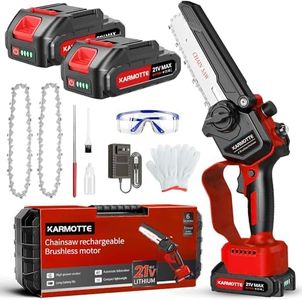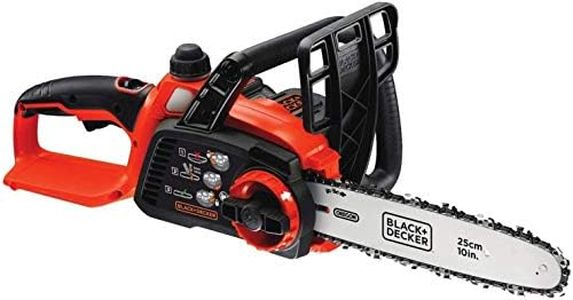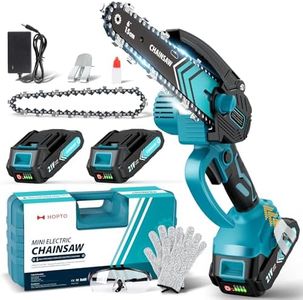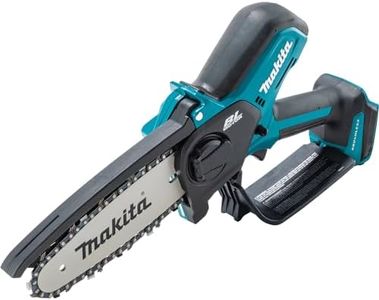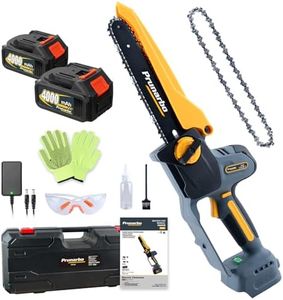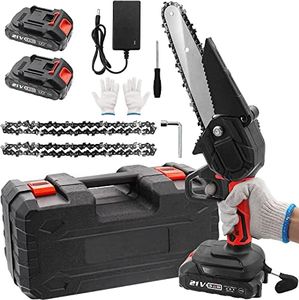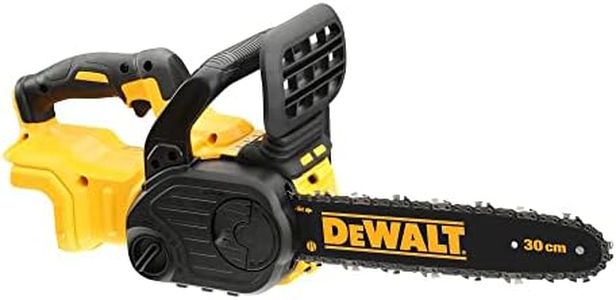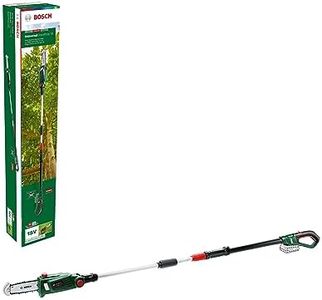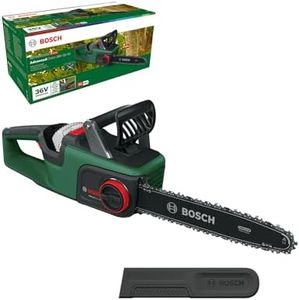We Use CookiesWe use cookies to enhance the security, performance,
functionality and for analytical and promotional activities. By continuing to browse this site you
are agreeing to our privacy policy
10 Best Cordless Chainsaws
From leading brands and best sellers available on the web.Buying Guide for the Best Cordless Chainsaws
When choosing a cordless chainsaw, it's important to find one that matches the tasks you plan to tackle, like pruning trees, cutting firewood, or clearing storm debris. Cordless chainsaws are popular because they combine the freedom of movement with quieter operation and less maintenance than gas-powered models. Focusing on the right specifications for your needs will help ensure you select a chainsaw that's safe, efficient, and comfortable for you to use.Battery VoltageBattery voltage is a measure of the power available for the chainsaw to use. Higher voltage typically means more cutting power, allowing you to tackle thicker or harder wood. Entry-level models usually have lower voltage (around 18-24V), which is suitable for light trimming and pruning. Mid-range options offer around 36-40V, good for general yard work and cutting small logs, while high-voltage chainsaws (over 50V) are made for heavy-duty cutting and larger trees. To pick the right voltage, consider the typical diameter and hardness of wood you'll be cutting—choose higher voltage for tougher, bigger jobs.
Bar LengthThe bar length is the length of the cutting blade, which determines the maximum size of wood you can cut in one pass. Shorter bars (10-12 inches) offer better control and are lighter, making them ideal for pruning branches and small trees. Medium bars (14-16 inches) fit most general yard work, while longer bars (18 inches or more) are best for cutting thicker logs and larger trees. Select a bar length that matches the largest average diameter you plan to cut, but keep in mind that longer bars require more power and can be harder to handle.
Battery RuntimeBattery runtime tells you how long the chainsaw can operate on a single charge, which is crucial if you plan to work for extended periods. Runtime depends on both battery capacity (measured in amp-hours, Ah) and efficiency. Short runtimes (20-30 minutes) suit quick, small jobs, whereas an hour or more is beneficial for tackling multiple or larger tasks. Think about how long you usually need to work in one session; if you regularly do longer jobs, look for a chainsaw with a longer runtime or consider having spare batteries ready.
WeightThe weight of a cordless chainsaw affects how easy it is to control and how quickly you may get tired while using it. Lighter chainsaws (under 8 pounds) are easier to maneuver and best for overhead work or users who may not have a lot of strength. Heavier models (over 10 pounds) might have more power but can cause fatigue during extended use. Choose a weight that matches your physical capability and the type of cutting you'll do—lighter for frequent, quick jobs, and heavier if you need more power for tougher cuts.
Chain SpeedChain speed is how fast the cutting chain moves, usually measured in feet or meters per second. Higher speeds allow faster and smoother cuts, which is beneficial for bigger jobs or harder woods. Lower speeds may be sufficient for small pruning and reduce the risk of kickback for beginners. If you expect a variety of cutting tasks, choose a higher chain speed for efficiency, but for basic trimming, a standard or lower speed is usually enough.
Safety FeaturesSafety features like chain brakes, hand guards, and low kickback bars are important to help prevent accidents. Chain brakes can stop the chain quickly if a kickback occurs, hand guards protect your hands, and low kickback bars reduce the chance of sudden upward movement. Look for these features especially if you’re new to chainsaw use or plan to cut in challenging positions; prioritizing safety will help prevent injuries and give peace of mind.
